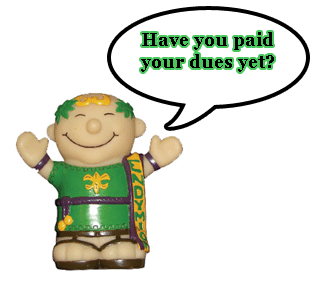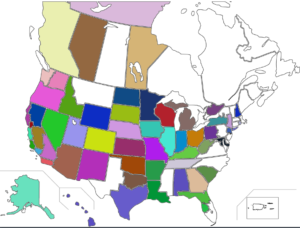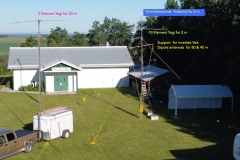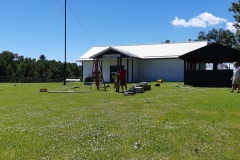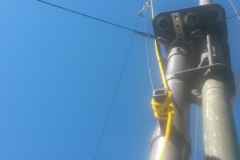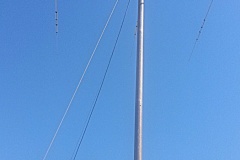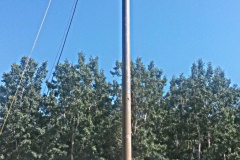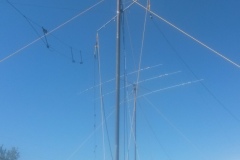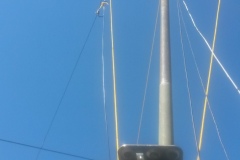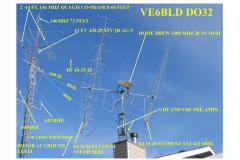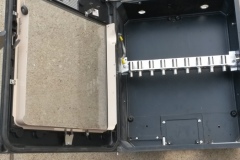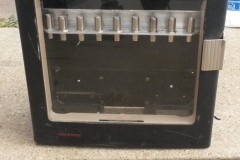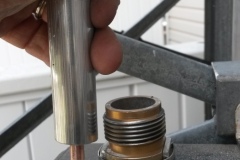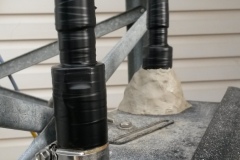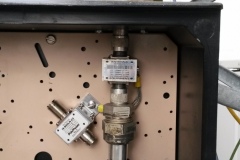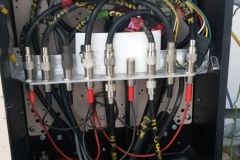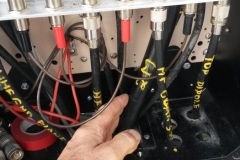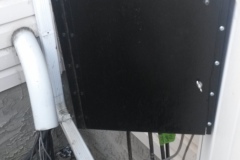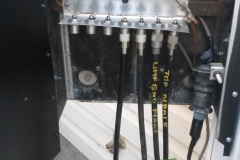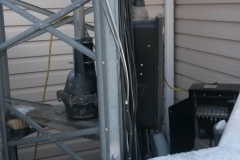- Home
- Registration
- Site Tools
- Articles
- Swap n Shop
- Contesting
- Grounding information for everyone
- History of the Central Alberta Amateur Radio Club
- CAARC owned Repeaters
- Club Repeater Info
- GMT Time Conversion Table
- VE/VA6 Incoming QSL Bureau
- Pine Lake Tornado Friday July 14, 2000.
- Amateur Radio to the Rescue
- CANWARN
- HAM Nation with Bob Heil K9EID
- Net info
- Events.
- ARES
- Links and On line study course.
- Field Day 2019
- Members D/L
- Forum/Swap and Shop
Articles

Have you paid your dues and confirmed your RAC membership to the executive?
Nov 15th
Club memberships are due in November. Please submit your dues as shown below.
Club memberships are $25.00 each or $30.00 for a family and are due now. You must be a paid-up member to be eligible to vote at the Annual General meeting in November. Cheques may be mailed to Central Alberta Amateur Radio Club, Box 1103, Red Deer, AB, T4N 6S5. If you prefer, Garry VE6CIA has also agreed to accept e-transfers for club memberships at ve6cia at gmail dot com. This is what we did for the club raffle earlier this year.
Club insurance is due. Please also confirm your RAC membership by email ( ve6cia at gmail dot com ) so we can get the best rate for the club.
can also download the CAARC membership and renewal form under the “Site tools” tab and send your dues by snail mail to the listed address on the bottom of the form or bring it to the meeting. Your support helps keep your repeaters operating and your club active.
Thank you from your executive
73 CAARC Executive

Field Day Pictures 2021
Jul 5th
Thanks to everyone who submitted these pictures. Be sure to check all four pages at the bottom of the first page for all the pictures.
These are the field day results as submitted to ARRL (Thanks VA6SGL ) Great job everyone!
VE6QE_FD_Report
VE6BLD’s first try on an Electric Unicycle! TOO MUCH FUN!
Apr 27th
A few weeks ago I was at my son’s place in Okotoks and he helped me try his new Electric Unicycle. It was a very cold and windy day but after 3 tries I managed to go a few hundred feet! What a blast!
Click these links for my 3 best tries…
Dad’s 2nd Good Ride on Michael’s EUC This would be easier on a flat lawn with no wind!!
I may have to get one of these..
RAC Canada Day Contest
Feb 3rd
I just received this in my in box today!
VE6BLD RAC Canada Day Contest 2020Earthlings and astronauts chat away, via ham radio
Dec 24th
Earthlings and astronauts chat away, via ham radio

The International Space Station cost more than $100 billion. A ham radio set can be had for a few hundred bucks.
Perhaps that explains, in part, the appeal of having one of humankind’s greatest scientific inventions communicate with Earth via technology that’s more than 100 years old. But perhaps there’s a simpler explanation for why astronauts and ham radio operators have been talking, and talking, for years.
NASA astronaut Doug Wheelock was just a few weeks into his six-month mission at the space station when feelings of isolation began to set in.
Wheelock would be separated from loved ones, save for communication via an internet phone, email or social media. At times, the stress and tension of serving as the station’s commander could be intense.
One night, as he looked out a window at the Earth below, he remembered the space station’s ham radio. He figured he’d turn it on—see if anyone was listening.
“Any station, any station, this is the International Space Station,” Wheelock said.
A flood of voices jumbled out of the airwaves.
Astronauts aboard the space station often speak to students via ham radio, which can also
CAARC 2020 Official Field Day Scores
Dec 16th
I finally looked in the December QST for the 2020 ARRL Field Day Results.
Boy, are there a lot of entries to read through this year.
Our Central Alberta ARC showed 7 entries for a total of 2,928 points. These were the participants that I could confirm in the listings (my digital copy had very small print and I don’t think it supports “Find”}:
(December 19, adding information VA6SJA)
Station Class Points
VE6CIAÂ Â Â Â 1DÂ Â Â Â Â Â Â Â Â Â Â Â Â Â Â Â Â Â Â Â Â Â Â Â Â Â Â Â Â Â 644
VA6SJAÂ Â Â Â 1EÂ Â Â Â Â Â Â Â Â Â Â Â Â Â Â Â Â Â Â Â Â Â Â Â Â Â Â Â Â Â 384
VE6WCEÂ Â Â 1DÂ Â Â Â Â Â Â Â Â Â Â Â Â Â Â Â Â Â Â Â Â Â Â Â Â Â Â Â Â Â Â 56
VA6MPMÂ 1B 1 Operator Battery 155
Points accounted for 1,239.
In addition, by some technical glitch, it appears that the VE6BLD entry was not recorded. He sent in his entry and used the club name Central Alberta ARC. That station had 372 voice QSOs which would have added 372 points to our total.
As a matter of interest. there were scores as low as 2 in the 1D category and 46 in the 1E category. So, you should not have felt that your score was too low to submit.
Did you participate under the Club Name of Central Alberta ARC? Would you like to add your statistics here?
If you cannot look up your own score, send your claimed score to me at va6sja@rac.ca and I will try to confirm it.
John VA6SJA

VE6BLD’s solar pop can heater to warm your shack from the sun.
Nov 11th
In 2014 I found a video on you tube of a man in Newfoundland who had built a solar pop can heater. I decided I would build one for my big shop in the back of my large town lot. There is a south facing wall to install it on a foot away from the wall for safety reasons as it can produce 80 -90 degree C! I had an old double pane window in the shop that was about 3 by 7 feet. So the project began. I also had the aluminum frame from a score clock which had been removed from a school gym which turned out to be the perfect depth to fill with rows of pop cans after being insulated with 2 inch styrofoam. The metal frame also had a perfect indentation on the front to install the double pane window. See the pictures in the link below for how I built this pop can heater. I used a small squirrel cage fan on the inlet in the garage and another one on the outlet in the garage. There is a temperature sensor 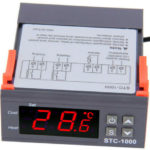 at the top of the outlet pipe connected to an adjustable digital temperature control ($8.00 on ebay). I can set any temperature to turn on the fans and I can also adjust the differential to turn off. As soon as the sun comes up and shines on the heater it will quickly come to the set temperature I programed of 32 C. The heater was tested to produce up to +180 degrees F (+80 degrees C) before I installed the fans. This is a good reason to have 2 fans so it will not melt the heater if one fan quits! Today Nov 11, 2020 the sun was very low (temperature – 12 degrees all day) but the heater quickly rose to +32 C and the thermostat turned the fans on. The heater produced a steady +18 C temp into the garage all day until there was no more sun shining on it. ! Darn nice free solar heat.
at the top of the outlet pipe connected to an adjustable digital temperature control ($8.00 on ebay). I can set any temperature to turn on the fans and I can also adjust the differential to turn off. As soon as the sun comes up and shines on the heater it will quickly come to the set temperature I programed of 32 C. The heater was tested to produce up to +180 degrees F (+80 degrees C) before I installed the fans. This is a good reason to have 2 fans so it will not melt the heater if one fan quits! Today Nov 11, 2020 the sun was very low (temperature – 12 degrees all day) but the heater quickly rose to +32 C and the thermostat turned the fans on. The heater produced a steady +18 C temp into the garage all day until there was no more sun shining on it. ! Darn nice free solar heat.
Click the pictures in the gallery
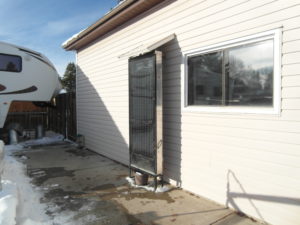
Click this link to see the picture gallery of this project

Preparations for Field Day 2020 at VA6SJA
Oct 27th
This is some of my Field Day story. What is yours? Anyone else who participated in Field Day is welcome to post about their efforts to this web site.
I have always enjoyed Field Day since my introduction to the ARRL sponsored annual event as a new amateur in 1994.
To adapt CAARC’s 2020 Field Day efforts to today’s COVID reality, as CAARC appointed Field Day leaders, Paul VA6MPM and I decided to encourage participation from individual stations this year rather than gathering in a big group to set up and operate a Class A station. This resulted in amateurs participating from their regular home stations, either using commercial power or using emergency batteries or generators, or participating in portable stations of 1 or 2 participants (Class B).
Here is the story of my setting up my 2020 Field Day Station.
Partly because of my family’s frequent moves, I do not have a permanent outside amateur radio antenna infrastructure. More >
VE6BLD multi-coax junction box on my tower
Oct 16th

